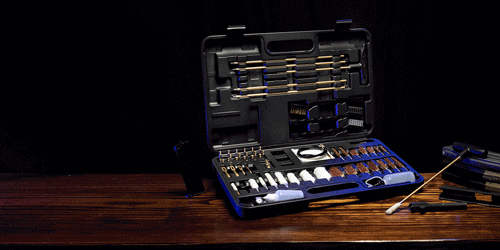How to Track and Scout Wildlife Before the Hunt
Effective tracking and scouting can make all the difference in your hunting success. By learning to observe animal signs, understand their habits, and use the right tools, you’ll increase your chances of a rewarding experience in the field. Here’s a step-by-step guide to scouting and tracking wildlife before the hunt.
Research Your Target Species
Before heading out, gather as much information as possible about the species you’re targeting. Understanding the animal’s habits, diet, and preferred habitat will guide your scouting efforts.
- Behavior Patterns: Learn about seasonal patterns, mating rituals, and feeding habits. For instance, deer are more active during the rut in late fall, while turkey activity peaks in early spring.
- Habitat: Different animals prefer specific environments. Deer tend to favor wooded areas with dense cover, while waterfowl are found around lakes and marshes.

Choose the Right Scouting Tools
The right tools can provide invaluable information about animal movement and help you cover larger areas without leaving a significant presence.
- Trail Cameras: Place trail cameras in high-traffic areas like feeding spots, water sources, or game trails. Check the cameras regularly or use models that transmit images to your device.
- Binoculars and Spotting Scopes: Binoculars let you observe animals from a distance without disturbing them. Spotting scopes are great for wide-open areas where animals may be far away.
- GPS and Mapping Apps: Mapping tools like OnX Hunt and Google Earth can help you mark animal locations, trails, and potential hunting spots. They also help you track your movements and avoid overlapping areas.

Identify Key Wildlife Signs
Being able to identify wildlife signs is essential for tracking and understanding animal movement patterns. Here are some common signs to look for:
- Tracks: Animal tracks are one of the most reliable indicators of recent movement. Familiarize yourself with the track patterns of your target species to differentiate them from other wildlife.
- Scat: Animal droppings can reveal an animal’s recent location, diet, and even its health. Fresh scat indicates the animal was recently in the area, while older scat shows long-term use of the area.
- Scrapes and Rubs: For deer, look for scrapes on the ground and rubs on trees, which indicate marking behavior. These signs are especially prevalent during the rut.
- Trails and Bedding Areas: Game trails are paths animals regularly use to travel. Bedding areas, where animals rest, are often found near food or water sources, particularly in locations offering cover.
Locate Food and Water Sources
Animals are often found near food and water, especially during specific times of the day. Scouting these areas can significantly increase your chances of spotting wildlife.
- Feeding Areas: Identify natural food sources like berry bushes, acorns, or grassy clearings. Different animals have unique dietary needs, so focus on the types of food your target species consumes.
- Water Sources: Rivers, lakes, and small streams attract many animals. Look for areas where you can monitor wildlife coming to drink, especially during the early morning or late afternoon.

Use Wind and Weather Patterns to Your Advantage
Animals are highly sensitive to scent and sound, so be mindful of wind direction and weather conditions when scouting.
- Wind Direction: Always position yourself downwind from your target to minimize the chance of animals detecting your scent.
- Weather Changes: Wildlife behavior often shifts with changes in weather. After a rain, for instance, deer are more likely to move around, as moisture dampens their sound. Likewise, before a storm, animals often feed more actively, anticipating a period of rest.
Practice Stealth and Patience
When scouting, avoid disturbing the area more than necessary. Animals can easily become aware of human presence, which may alter their habits.
- Minimize Noise: Move quietly through the brush and avoid sudden movements. Consider scouting footwear that reduces noise.
- Set Up a Blind or Hide: Using blinds or natural cover allows you to observe animals closely without alerting them to your presence. Setting up a tree stand is also a great option for watching undetected from above.
- Limit Your Visits: Once you’ve identified an active area, limit your scouting trips to avoid spooking the animals. Instead, rely on trail cameras or spotting scopes to monitor remotely.

Record Your Observations
Keeping a record of your observations can help you understand patterns over time and plan future hunts more effectively.
- Field Notebook or App: Write down details like animal sightings, behavior, weather conditions, and time of day. A waterproof notebook is handy for field use.
- Photos and Map Markers: Take photos of key signs and locations. Use your mapping app to mark spots with high activity, bedding areas, and potential ambush points.

Evaluate and Adjust as Needed
As the season progresses, animal patterns may change due to factors like food availability and hunting pressure. Be flexible and adjust your approach based on updated observations.
- Change Locations: If activity decreases in one area, try new locations with similar features or food sources.
- Update Camera Placements: Move trail cameras as you notice shifts in animal behavior, such as new travel routes or bedding areas.





